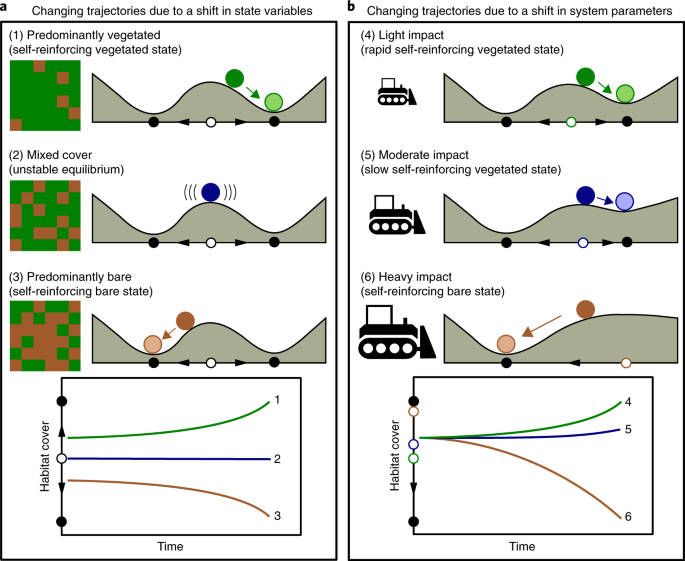Are you tired of constantly running out of battery power in the middle of mowing your lawn? Well, worry no more! In this article, we will provide you with the most effective and simple techniques to maximize the battery life of your cordless lawn mower. With these charging best practices, you can ensure that your mower stays powered up and ready to go, allowing you to effortlessly maintain your beautiful lawn all season long. Say goodbye to frustrating interruptions and hello to a hassle-free mowing experience. So, let’s dive right in and discover the secrets to a longer lasting battery for your cordless lawn mower.
Choosing the Right Battery
When it comes to choosing the right battery for your cordless lawn mower, it’s important to do your research and consider your options carefully. There are several factors to consider, such as battery type, capacity, voltage, and amp-hour ratings. Different batteries have different characteristics and capabilities, so it’s essential to choose one that meets your specific needs.
Researching Battery Options
Before committing to a specific battery, take the time to research the available options. Look for reputable brands that have a track record of producing high-quality batteries. Consider factors such as battery life, charging time, and durability. Reading customer reviews and seeking recommendations from fellow lawn mower owners can also provide valuable insights into which batteries perform well in real-world conditions.
Understanding Battery Capacity
Battery capacity refers to the amount of energy a battery can store and provide over time. It is typically measured in ampere-hours (Ah). A higher Ah rating means the battery can deliver power for a longer duration, allowing you to mow a larger area before needing to recharge. Keep in mind that higher capacity batteries may be larger and heavier, so strike a balance between capacity and practicality based on the size of your lawn and your physical capabilities.
Considering Voltage and Amp-Hour Ratings
Voltage and amp-hour ratings are important considerations when choosing a battery for your cordless lawn mower. Voltage determines the power output of the battery, with higher voltages generally translating to more power. Amp-hour ratings, as mentioned earlier, reflect the battery’s capacity. When selecting a battery, make sure its voltage and amp-hour rating are compatible with your lawn mower’s requirements. Refer to your mower’s user manual or consult the manufacturer’s specifications for guidance.
Proper Charging Technique
Caring for your lawn mower battery goes beyond simply charging it. Employing proper charging techniques can maximize the battery’s lifespan and keep it performing at its best.
Using the Manufacturer’s Charger
To optimize the charging process and ensure compatibility, it is recommended to use the charger provided by the battery manufacturer. Manufacturers design their chargers specifically for their batteries, guaranteeing that the charging process is safe and efficient.
Avoiding Overcharging
Overcharging a battery can decrease its overall lifespan and performance. To prevent overcharging, avoid leaving your battery connected to the charger for prolonged periods once it is fully charged. Most modern chargers automatically switch to a maintenance or trickle charge mode after reaching full capacity, which keeps the battery topped off without overcharging it. However, it is still important to be mindful of how long the battery remains connected to the charger.
Ensuring Proper Voltage and Current
When charging your cordless lawn mower battery, it is crucial to ensure that the charger supplies the correct voltage and current. Using a charger with the wrong specifications can result in undercharging or overcharging the battery, both of which can be detrimental to its performance and lifespan. Always verify that the charger you are using is compatible with your battery’s requirements.
Charging in an Appropriate Environment
When charging your battery, it is essential to do so in a suitable environment. Avoid charging your battery in extremely hot or cold conditions, as extreme temperatures can negatively impact its performance and reduce its overall lifespan. Aim to charge the battery in a temperature-controlled environment, ideally within the manufacturer’s recommended operating temperature range.
Monitoring Charging Progress
While many modern chargers include indicator lights or other features to track charging progress, it is still important to periodically check on the charging process. Regularly inspect the charger and battery to ensure they are functioning correctly. If you notice any unusual behavior or have concerns about the charging process, consult the battery’s user manual or contact the manufacturer for guidance.
Charging Frequency
Optimizing the frequency at which you charge your cordless lawn mower battery can have a significant impact on its overall lifespan and performance. Following a few best practices can help maximize the battery’s longevity and ensure it remains in good condition.
Avoiding Frequent Partial Charges
Frequent partial charges can shorten the battery’s lifespan and lead to decreased performance. Instead of charging your battery after every use, consider waiting until it has been significantly drained before starting the charging process. This approach allows the battery to undergo more complete charge cycles, which can help maintain its capacity over time.
Optimizing Full Charge Cycles
While avoiding frequent partial charges is beneficial, it is equally important to regularly complete full charge cycles. A full charge cycle refers to fully discharging the battery and then fully recharging it. This practice helps calibrate the battery’s capacity readings and can extend its overall lifespan. However, keep in mind that running the battery completely flat too often can also be detrimental, so find a balance between partial and full charge cycles.
Balancing Battery Usage and Charging
Striking a balance between battery usage and charging is crucial for maximizing its lifespan and maintaining optimal performance. Overusing the battery without appropriate charging can lead to decreased capacity and overall deterioration. On the other hand, excessive charging without regular use can cause the battery to lose its ability to hold a charge effectively. Aim to find a balance that aligns with your mowing needs and the battery’s capabilities.
Storage and Maintenance
Proper storage and regular maintenance are essential to keep your cordless lawn mower battery in top condition. By following a few simple practices, you can help extend its lifespan and ensure it remains reliable for years to come.
Storing the Battery Correctly
When storing your battery, it is important to do so in a cool and dry place. Avoid exposing it to extreme temperatures, as both excessive heat and cold can degrade the battery’s performance and capacity. If possible, remove the battery from the lawn mower and store it separately to prevent any potential damage or corrosion caused by prolonged exposure to the elements.
Regular Maintenance Checks
Performing regular maintenance checks on your lawn mower battery can help identify any potential issues before they escalate. Inspect the battery for signs of damage, such as cracks, leaks, or bulges. Check the connectors and cables for any corrosion or loose connections. If you notice any abnormalities, consult the manufacturer’s instructions or seek professional assistance to address the problem promptly.
Cleaning Battery Contacts
Maintaining clean and corrosion-free battery contacts is crucial for maximizing performance and ensuring reliable operation. Over time, dirt, debris, and oxidation can accumulate on the battery contacts, impeding proper electrical conductivity. Regularly clean the battery contacts using a soft cloth or a gentle cleaning solution recommended by the manufacturer. Ensure the contacts are completely dry before reconnecting the battery.
Inspecting Cables and Connectors
In addition to the battery contacts, it is equally important to inspect the cables and connectors for any signs of damage or wear. Check for frayed wires, loose connections, or any other visible issues. Damaged cables or connectors can lead to poor electrical connections and hinder the battery’s performance. If you notice any problems, consult the manufacturer or a professional for advice on repair or replacement.
Avoiding Extreme Temperatures
Extreme temperatures can have a significant impact on your cordless lawn mower battery’s performance, capacity, and overall lifespan. Taking precautions to avoid exposing the battery to excessive heat or cold can help maintain its functionality and optimize its longevity.
Understanding Temperature Limits
Batteries typically have a specified temperature range within which they perform optimally. Operating the battery outside of this range can result in reduced capacity, decreased performance, and even irreversible damage. Familiarize yourself with the manufacturer’s recommended temperature limits for your battery and make efforts to keep it within that range as much as possible.
Minimizing Exposure to Heat
When not in use or charging, try to store your lawn mower battery in a cool and dry place. Avoid leaving it in direct sunlight or near sources of heat, such as radiators or hot surfaces. Excessive heat can cause the battery to deteriorate faster and may even lead to safety hazards. By minimizing exposure to heat, you can help preserve its performance and extend its lifespan.
Protecting the Battery from Cold
Just as excessive heat can harm the battery, extreme cold can also negatively impact its function and capacity. When using your lawn mower in colder temperatures, be aware that the battery’s performance may be slightly reduced. If possible, store the battery in a warmer environment when not in use to prevent it from being exposed to freezing temperatures.
Warming Up Before Use
If you need to use your cordless lawn mower in colder weather, it is beneficial to allow the battery to warm up before operating it. Batteries tend to perform better when they are at a moderate temperature. Consider bringing the battery indoors or storing it in a warmer location for a short period before attaching it to the lawn mower. This step can help optimize its performance and extend its runtime.
Battery Safety Tips
Ensuring the safety of yourself, your property, and the environment is paramount when it comes to handling and operating lawn mower batteries. By following a few simple safety tips, you can reduce the risk of accidents, damage, and potential hazards.
Keeping Batteries Away from Flammable Materials
Lawn mower batteries should always be stored, charged, and operated away from any flammable materials or substances. This includes gasoline, oil, and other chemicals commonly used in gardening or lawn care. Flammable materials can pose a significant fire risk if they come into contact with a damaged or malfunctioning battery.
Protecting Batteries from Moisture
Moisture and electrical components do not mix well. Keep your cordless lawn mower battery away from wet areas and do not expose it to rain or other sources of water. Moisture can damage the battery, compromise its performance, and even pose electrical hazards. Use caution when mowing wet grass to prevent water from seeping into the battery or the lawn mower itself.
Avoiding Physical Damage
Handle your lawn mower battery with care and avoid subjecting it to unnecessary physical stress or impact. Dropping, striking, or mishandling the battery can cause internal damage and potentially lead to safety risks. Treat the battery with the same caution and care as you would any delicate electronic device.
Using Proper Storage Containers
When transporting or storing your battery, use a suitable container specifically designed for this purpose. Look for a sturdy, non-conductive battery case or bag that fits your battery securely. This step helps protect the battery from accidental damage and prevents it from coming into contact with other objects that could potentially cause a short circuit.
Optimizing Overall Mower Performance
While the focus is primarily on the battery, it is important to consider various factors that can optimize the overall performance of your cordless lawn mower. By choosing the right mower, employing efficient operating techniques, and practicing regular maintenance, you can enhance the mower’s capabilities and maximize its effectiveness.
Choosing the Right Mower for Your Needs
Carefully assess your lawn size and mowing requirements to select a cordless lawn mower with adequate power and cutting capacity. Consider factors such as deck size, battery compatibility, and additional features that suit your specific needs. A well-matched mower will work in harmony with the battery, resulting in efficient operation and optimal performance.
Efficient Operating Techniques
Implementing efficient operating techniques can help conserve battery power and extend the runtime of your cordless lawn mower. Avoid unnecessary idling or running the mower at higher speed settings than necessary. Cut the grass in a systematic pattern, making each pass count to cover the desired area with minimal overlap. Maintaining a consistent mowing speed can also contribute to maximizing battery efficiency.
Maintaining Sharp Blades
Regularly inspect and sharpen your lawn mower blades to ensure they remain in optimal condition. Dull blades require more power to cut efficiently, which can place additional strain on the battery. Sharpened blades provide cleaner cuts, reducing the resistance and power demand during mowing. Proper blade maintenance contributes to improved battery efficiency and overall cutting performance.
Proper Tire Inflation
Check the tire pressure of your cordless lawn mower regularly and ensure they are properly inflated. Underinflated tires can increase rolling resistance, making the mower work harder and draining the battery faster. Refer to the manufacturer’s recommendations for the correct tire pressure and adjust accordingly to optimize the mower’s efficiency and battery performance.
Battery Recycling and Disposal
Proper disposal and recycling of your cordless lawn mower battery are crucial for environmental sustainability and reducing waste. Batteries contain valuable materials that can be recycled and repurposed, diverting them from landfills and minimizing their environmental impact. Follow these guidelines to ensure safe and responsible battery disposal.
Understanding Battery Materials
Cordless lawn mower batteries typically contain various metals, such as lithium, nickel, and cobalt, among others. These materials can be toxic and harmful to the environment if not disposed of correctly. Understanding the composition of your battery can help you make informed decisions about disposal methods and recycling programs available in your area.
Researching Local Recycling Programs
Before discarding your lawn mower battery, research local recycling programs or facilities that accept and responsibly recycle batteries. Many municipalities or recycling centers have designated drop-off points or collection events specifically for household batteries. Check with your local waste management authority or search online directories to find the most convenient recycling options near you.
Safe Disposal Methods
If recycling options are not readily available in your area, it is essential to handle battery disposal responsibly. Do not throw batteries in the regular trash, as this can lead to environmental contamination and potential hazards. Contact your local waste management authority or inquire with battery retailers about proper disposal techniques. They can provide guidance on safe disposal methods or point you in the direction of specialized battery recycling services.
Extending Battery Life
To maximize the lifespan and performance of your cordless lawn mower battery, incorporating a few habits and practices can go a long way. By following these tips, you can help ensure your battery serves you reliably for as long as possible.
Avoiding Deep Discharges
Deeply discharging your lawn mower battery regularly can significantly reduce its overall lifespan. While occasional deep discharges are necessary for calibration and maintenance, aim to avoid letting the battery run completely flat too frequently. Running the battery close to empty puts additional strain on its cells and can contribute to premature degradation.
Limiting High-Current Drain
Minimizing high-current drain from the battery helps preserve its performance and capacity. Refrain from excessively demanding tasks that draw a large amount of power from the battery for an extended period. Operating attachments or accessories with high power requirements for prolonged durations can accelerate the battery’s deterioration. Use such features judiciously, taking care not to overtax the battery unnecessarily.
Reducing Parasitic Load
Parasitic load refers to the power drawn by devices or circuits in your lawn mower when it is not in use. Even when turned off, some components may consume a small amount of power, gradually draining the battery. To reduce parasitic load, disconnect any non-essential accessories or devices when not in use. This practice minimizes unnecessary power drain and helps preserve battery capacity.
Storing Batteries Properly
Proper storage is vital for maintaining a battery’s performance during periods of non-use. When planning to store your cordless lawn mower battery for an extended period, ensure it is approximately 50% charged before placing it in storage. This level of charge helps prevent self-discharge and keeps the battery in an optimal condition. In addition, follow the previous storage guidelines regarding temperature and suitable storage containers.
Evaluating Replacement Needs
Over time, even with optimal care, your cordless lawn mower battery may begin to deteriorate, indicating a need for replacement. Understanding the signs of battery deterioration, knowing when to replace, and selecting an appropriate replacement battery are essential for continued mower performance.
Signs of Battery Deterioration
Several indicators can signify that your lawn mower battery is deteriorating. These include decreased runtime or overall mowing capacity, longer charging times, or the battery not holding a charge as effectively as before. Additionally, if the battery becomes excessively hot during use or charging, it may be a sign of internal problems. Pay attention to these warning signs and consider evaluating the battery’s condition.
Determining When to Replace
When deciding whether to replace your cordless lawn mower battery, it’s ultimately a balancing act between its performance and your desired mowing capabilities. If your battery falls below an acceptable level of performance, such as significantly reduced runtime or inability to mow the desired area in a single charge cycle, it may be time for a replacement. Evaluate your mowing needs and compare them against the battery’s capabilities to make an informed decision.
Choosing a Replacement Battery
When selecting a replacement battery, refer to the manufacturer’s recommendations and specifications. Opting for a battery that matches the original battery’s voltage, amp-hour rating, and compatibility ensures optimal performance and charging compatibility. Avoid using aftermarket or unofficial batteries, as they may not provide the same level of performance, reliability, or safety standards as genuine replacements. Invest in a high-quality replacement battery to ensure continued satisfaction with your cordless lawn mower.
In conclusion, maximizing the lifespan and performance of your cordless lawn mower battery relies on various practices, including choosing the right battery, employing proper charging techniques, considering charging frequency, storing and maintaining the battery correctly, avoiding extreme temperatures, following battery safety tips, optimizing overall mower performance, recycling and disposing of the battery responsibly, extending battery life through proper usage, and evaluating replacement needs when necessary. By implementing these best practices, you can enjoy efficient and reliable lawn mowing experiences while getting the most out of your cordless lawn mower battery investment.





